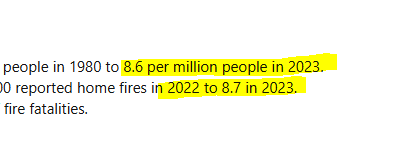I’ve heard that the increasingly sophisticated suite of safety features of cars - air bags, crumple zones, antilock brakes, collision avoidance radar and adaptive cruise control, have only served to make the average driver more reckless, and give permission to be distracted. I wonder if externalizing the perceived* responsibility for plan check to the AHJ is a partial cause (not merely correlation) for increased carelessness by RDPs.
Every time I see a flashy car commercial depicting a driver doing anything other than driving I yell at the TV.
This has crept into a hot button for me, and I usually try to keep quite. But this thread has drifted into it for me so here goes.
I think codes have fallen victim to mission creep. They have moved away from a set of minimums, to a set of agenda driven wish-lists, virtue signaling, and industry influence. We have moved away from what works and is safe, to a set of nanny codes that tries to be all things to all people. They have become too complex, too numerous, and too inclusive. I think they force non-compliance, and a reliance on "others". Others being relative to who reads them (or doesn't) and becomes a circular process. The plumber relies on the contractor, the contractor relies on the inspector, the inspector relies on the plan reviewer, the plan reviewer relies on the designer, the designer relies on the contractor, the contractor relies on the plumber...you get the picture. Critical thinking and skill is excused, devalued, and sometimes laughed at.
This code says that, that code says this. This agency enforces that, that agency enforces this. And just about the time any one code finally makes sense, gets understood, and works its way into widespread practice it is moved, changed, or deleted. It is hard to fault the builder, code official, or designer.
Like anything, give people too much to read, they stop reading. Give too much data, they stop processing. Give too much code, they stop caring. By people I mean all parties. Count the code books, the pages, the rules, the exceptions, the references. Then think where it will be in a decade. We have all asked about the future of the profession. Do we think it will be better if we can just get a little more code? Would it get better if self-certification is implemented? Would it change anything? Will we need a new set of books for that?
Based on my experience, the DP's I deal with have no business in our business, but as Yikes points out, has too much code allowed them to become complacent? Has it forced them to be that way? Has it removed any sense of responsibility?
End rant.

